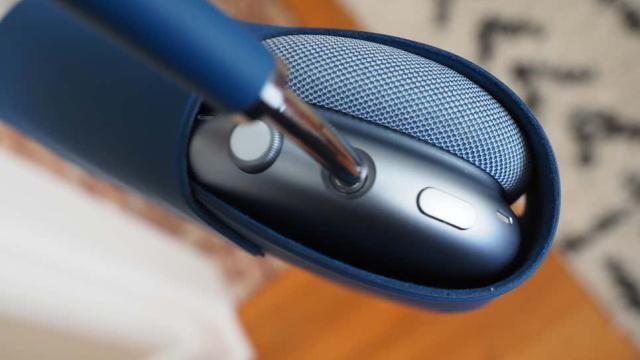Give me a moment to put on some noise-cancelling headphones so I can block out the latest AirPods Max chatter, because a new rumour going around suggests Apple might nix one of the device’s best features.
Apple’s over-ear headphones are too expensive to recommend to most people (go with Bose or Sony, instead), but they do come with unique features not found on other sets. One of those is the Digital Crown, a control dial inspired by the Apple Watch that’s used for adjusting volume and playback controls. It rotates smoothly, gives you physical feedback for more precise adjustments, and adds a touch of elegance.
So it pains me to report that Patently Apple has uncovered a patent showing how a touch-sensitive surface could be used to control a pair of headphones that look suspiciously like the AirPods Max. Apple has already been granted a patent for touch controls on fabric (probably for upcoming HomePod models) and another for gesture inputs on the exterior of headphone earcups.
This latest filing describes “processing gestures on a touch-sensitive surface” of what could only be over-ear AirPods. The patent describes how it would work; it’s all rather uninteresting, but the TL;DR is that sensors, processors, and memory would join forces to identify touches and execute gestures. Touch controls are found on most other Bluetooth headphones including Apple’s own AirPods 3 and AirPods Pro, so seeing them on the next iteration of the AirPods Max wouldn’t be much of a shock.
That said, this patent is an indication, not a firm confirmation, that Apple could remove the Digital Crown in favour of touch inputs. Our hope is that this will end up being one of the hundreds of patents that get filed, raise a few alarms, but never see the light of day.
That’s because the Digital Crown is one of the AirPods Max’s best features, and a unique addition you won’t find on competing models. The dial sits on top of one of the earcups and can be rotated to change volume or pressed to play, pause, skip, go back a track, and call up Siri. In comparison, touch controls, which are found in many of today’s headphones, typically work fine once you get used to them, but even the most reliable implementations occasionally register false inputs and misread swipes. And don’t bother attempting touch gestures in frigid weather.
One way Apple could justify dropping the Digital Crown is with a much-needed price drop (though the company should lower the price regardless). At $US549 ($762), the AirPods Max are some of the most expensive headphones on the market, short of those from luxury brands that make audiophile-grade equipment. Apple’s apparent thesis that people will buy its products regardless of price seems to have backfired; analyst Ming-Chi Kuo called the Max a “limited help” to Apple’s audio portfolio and predicted 2021 shipments of “about 1 million units.” That might seem like a success, but on an Apple scale, it is about 1% of all AirPod sales.
We might welcome touch controls if they bring about a considerable price drop, but otherwise, removing the Digital Crown would strip the AirPods Max of a truly unique feature — something these cans desperately need more of to justify their sky-high cost.
